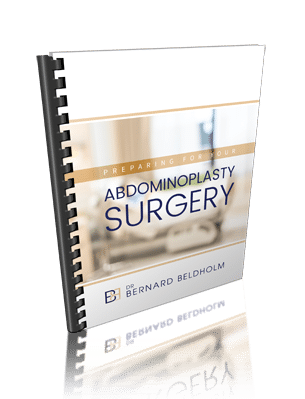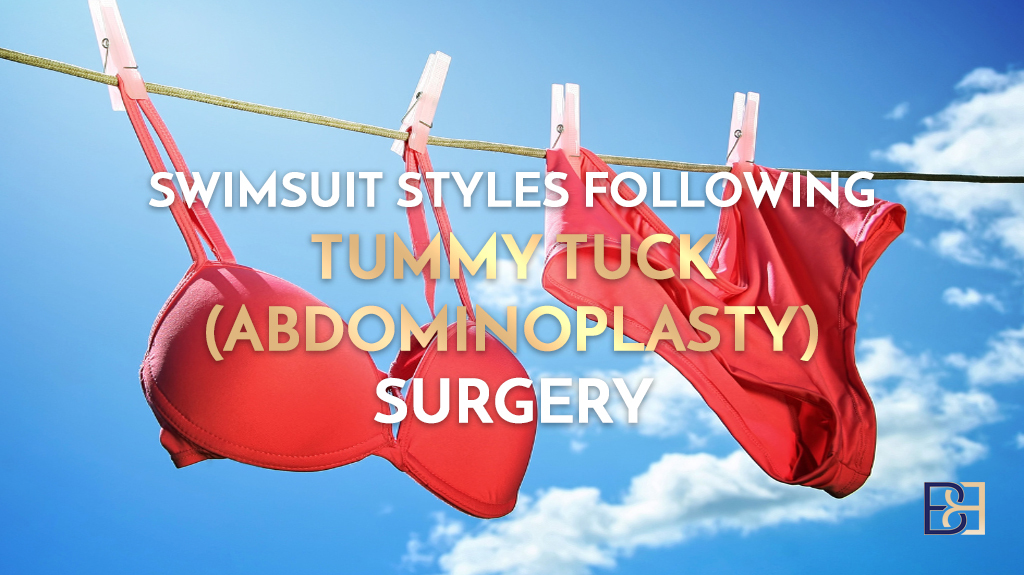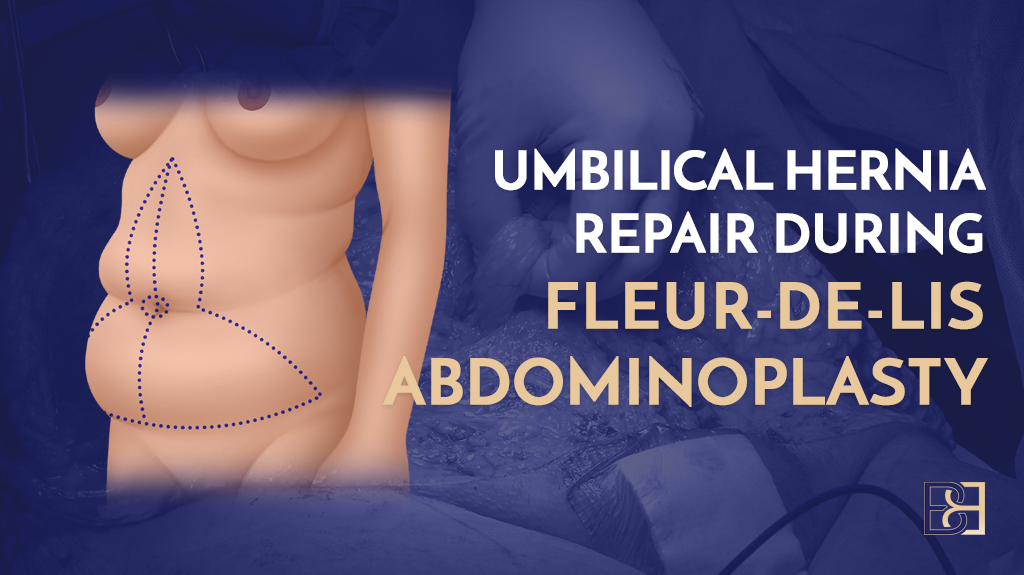Lipo-abdominoplasty is a combination of two surgeries, liposuction and abdominoplasty. This procedure offers the benefits of a tummy tuck (abdominoplasty) and liposuction (Suction Assisted Lipectomy) without the need to undergo two separate procedures. A lipo-abdominoplasty candidate has stubborn fat deposits, excess skin, and stable weight.

Book your appointment online now
Today I want to take a moment to discuss the possibility of undergoing both liposuction (suction-assisted lipectomy) and abdominoplasty at the same time.
Typically, a candidate for lipo-abdominoplasty has maintained a stable weight for several months, excess skin, and fat deposits that are resistant to diet and exercise.
Like any other major surgery, however, lipo-abdominoplasty carries its share of risks and complications, which is why it is crucial that we carefully weigh these factors to ensure the best possible outcome. As your surgeon, I will work closely with you to determine if this body contouring procedure is right for you.
What is Lipo-Abdominoplasty?

Lipo-abdominoplasty is a combination of two surgical procedures: liposuction (suction-assisted lipectomy) and abdominoplasty. The procedure is designed to remove loose skin and fat (Adipose tissue), which might not be as pronounced if the surgeries were done separately. Additionally, having one combined surgery can be more cost-effective and may result in a shorter overall recovery time compared to having two separate surgeries.
During a lipo-abdominoplasty procedure, I target excess fat deposits using VASER liposuction (Suction Assisted Lipectomy) and remove excess skin using abdominoplasty surgery techniques.

What is an Abdominoplasty?

Abdominoplasty is a procedure that targets excess skin and weak muscles (Diastasis recti) in your abdomen. There are different types of abdominoplasty surgery, such as Fleur-de-Lis, Full, Extended, and Mini Abdominoplasty.
Most abdominoplasty patients have undergone significant weight loss or back-to-back pregnancies. The type of abdominoplasty you get depends on your overall health, the extent of skin laxity, and excess skin.
You must lead a healthy lifestyle by prioritising a balanced diet and exercise to achieve long-lasting body contouring results.
Liposuction (suction-assisted lipectomy) vs. VASER Liposuction: What is the Difference?

Both liposuction (suction-assisted lipectomy) and VASER liposuction (Vibration Amplification of Sound Energy at Resonance Liposuction) remove excess fat from targeted body parts. The main difference between the two procedures is the method of delivery.

What is the Difference Between Abdominoplasty and Liposuction (suction-assisted lipectomy)?
Liposuction (suction-assisted lipectomy) and Abdominoplasty procedures are both body contouring procedures targeting different issues and involving distinct surgical techniques.
Abdominoplasty targets loose skin and diastasis recti, while liposuction (suction-assisted lipectomy) targets fat resistant to exercise and diets. During Abdominoplasty, I make an incision above your pubic area, separate the skin, remove the excess from the underlying tissues, and stitch the collapsed and separated abdominal muscles together to strengthen them. A liposuction (suction-assisted lipectomy) procedure involves inserting a small cannula tube, which breaks up and removes excess fat. However, I prefer using VASER liposuction for most of my procedures because it is precise, targets both superficial and deep layers, causes less damage to the surrounding tissues, and removes the most fat tissues.
The recovery period for an Abdominoplasty procedure is more extensive than for liposuction (suction-assisted lipectomy).

Download our short guide: “11 Important abdominoplasty techniques that you need to know about”
Advancements in Abdominoplasty Surgery: High Lateral Tension Abdominoplasty
When the High Lateral Abdominoplasty was introduced in 1955, it revolutionised the procedure by demonstrating that limited undermining could achieve impeccable results while maintaining blood flow.
Unlike traditional abdominoplasty, which focuses on vertical tension to tighten the abdomen, this method also applies tension laterally (horizontally). The approach tightens both the central and lateral parts of the abdomen, resulting in a more defined waistline.
An article published by PubMed states that “[h]igh-superior-tension abdominoplasty dramatically decreases or eliminates most complications of abdominoplasty and achieves more aesthetic results. This procedure is used in standard cases, for patients with massive weight loss, and for patients with very limited epigastric skin excess.”
Combining Liposuction and Abdominoplasty
From my 15 years of experience, I can attest that liposuction and abdominoplasty procedures each carry their share of success. However, when the two procedures are combined, they yield better results than when performed separately. By removing the excess fat deposits using VASER liposuction (Suction Assisted Lipectomy), lipo-abdominoplasty becomes less challenging because it limits dissection by emulsifying subcutaneous fat in the targeted area. This reduces the need for extensive undermining, which preserves blood vessels. Undermining increases the risk of complications because it causes trauma to the surrounding tissues, resulting in prolonged swelling or bruising and, eventually, tissue and skin necrosis.
According to a study published by PubMed, “[t]he combined procedure is similar in discomfort level to abdominoplasty alone (both 7.5 of 10) and produces the highest level of patient satisfaction (99.2 percent), with 97.6 percent of patients saying they would undergo the operation again and 99.2 percent recommending it to others.”

Risks and Complications of Lipo-Abdominoplasty
Every surgical procedure poses some degree of risks and complications. It could be caused by underlying health issues, medical history, and post-surgery care. Below are some prevalent risks and complications that we will discuss during our consultation sessions.
- Infection: Post-operative infections can occur despite preventative measures. Wash your hands before touching your wound dressing to promote proper healing and reduce the risk of infection. Signs of infection include redness, increased pain, swelling, and discharge at the incision site.
- Scarring: All surgical procedures result in some degree of scarring, and lipo-abdominoplasty can result in more prominent or keloid scars. However, I use all necessary measures to minimise the extent of scars. Additionally, proper wound care and sometimes additional treatments can help reduce scar visibility.
- Seroma: Seroma is the fluid that accumulates under the abdominal skin after surgery.
- Blood clots: Blood clots develop if you remain immobile for a long time. They travel to the lungs and cause pulmonary embolism, which causes further complications such as deep vein thrombosis.
- Numbness and changes in skin sensation: Temporary or permanent changes in skin sensation can occur due to nerve damage during the procedure, leading to numbness, tingling, or reduced sensitivity.

Recovery From Lipo-Abdominoplasty vs. Undergoing the Two Surgeries Separately
After your surgery, I will provide you with post-abdominoplasty guidelines on how to take care of your incisional site. A typical recovery period for lipo-abdominoplasty is 4-6, however when performed separately, your recovery time for abdominoplasty alone will be 4-6 weeks, while that for liposuction will be a few days to 2 weeks.
Cost Considerations of Lipo-Abdominoplasty vs. Undergoing the Two Surgeries Separately
Insurance doesn’t cover cosmetic surgeries but should cover part of the cost if your condition is deemed medically necessary. While lipo-abdominoplasty may be more expensive upfront, it can be more cost-effective in the long run. By combining the procedure, you can benefit from overlapping costs associated with anaesthesia, administrative fees, and facility time.

Preparing For Surgery
As you approach the D-day of your Lipo-abdominoplasty surgery, it’s essential to prepare your body and mind for the journey ahead. I encourage you to begin by scheduling a consultation where I will explain the surgery process in detail. I will also conduct physical and medical check-ups to ensure you’re fit and ready for the procedure.
I encourage you to adopt a healthy diet rich in fruits, vegetables, and lean protein to optimise your body’s natural healing abilities. Stock your home with essential items like pain medication and stool softeners.
Avoid strenuous activities, smoking, and drinking alcohol to minimise complications and promote healing.

Operation Overview
During your surgery, I will follow the following steps to ensure a successful procedure:
Step one: Markings
Before you go under the blade, I will make markings on your abdomen to guide me during the surgery. These markings will represent where I will make the abdominoplasty and liposuction incisions.
Step two: Anaesthesia
I use general anaesthesia for all of my body contouring procedures on my patients. The type of anaesthesia I chose depends on your medical history and the extent of the surgery. General anaesthesia puts you to sleep, allowing you to avoid the pain and fear associated with major surgery.
Step three: Incision
Once the anaesthesia takes effect, I will make a horizontal incision across your lower abdomen. The size of the incision depends on the extent of the excess skin. I will also make small incisions where I intend to remove fatty tissue.
Step four: Surgery
During your lipo-abdominoplasty surgery, I will first perform VASER liposuction to remove the stubborn fat tissues in your abdomen. The procedure entails inserting the cannula tubes in the incision, breaking down the fat tissues, and suctioning them out.
After the liposuction, I will remove the loose skin, repair abdominal muscles, and tighten the excess skin. In some instances, I will reposition the belly button to achieve your goals.
Step five: Post-op
After your operation, I will dress the incisional site using a PICO dressing that exerts negative pressure on the wound. I will also fit you with compression garments that support the repaired tissues and reduce swelling and discomfort.
Step six: Recovery
I require my patients to stay in the hospital overnight. Depending on the procedure, this may extend to a few days. The hospital stay gives you enough time to rest and heal while under close supervision during the early days of recovery. I will also give you a list of guidelines and instructions on taking care of your incisional wound to achieve optimal results.

After Care of Lipo-Abdominoplasty
After your lipo-abdominoplasty surgery, taking care of your incisional site is essential to avoid complications. Here is how you take care of your incisional wound:
- PICO Dressing: I highly recommend it to my patients because of its benefits. By applying negative pressure to the surgical site, PICO dressing increases blood flow to the area, reduces the risk of infection, and manages fluid buildup. You should wear your PICO dressing for the recommended amount of time.
- Compression Garments: Compression garments help reduce swelling and promote blood flow by exerting pressure on the incisional site. You should wear compression garments as long as I recommend to reap their full benefit.
- Sun Exposure: Exposing the surgical site to direct sunlight can cause hyperpigmentation, delay healing, and make your scars more visible. To ensure your wound heals nicely, wear protective clothing or use sunscreen when going outside.
How Long Will I Be Out-of-Commission with Lipo-Abdominoplasty vs. Undergoing the Two Surgeries Separately
When you get a lipo-abdominoplasty, your recovery time is less compared to someone who gets both surgeries separately. The following is a list of activities and their standard downtime:
Returning to Work
Most of my lipo-abdominoplasty patients return to work 2-4 weeks after surgery, depending on the nature of their job and the type of abdominoplasty. You should wait longer if your job demands high physical energy.
When performed separately, you can return to work 4-6 weeks after a tummy tuck and 1-2 weeks after your liposuction procedure, with a rest period between the two surgeries. But again, this will depend on the type of surgery.
Exercising
After your lipo-abdominoplasty procedure, you should do light exercises like walking during weeks 2-3. Exercising promotes blood flow, which aids in healing. You should avoid strenuous activities like heavy lifting to avoid complications.
A liposuction (Suction Assisted Lipectomy) procedure alone is minor, so you can start moving around after 1 week. Avoid straining your body in the process. An abdominoplasty requires 4-6 weeks of rest before you start light exercises. To fully start exercising after concurrently getting the two procedures, you will need a downtime of 6-8 weeks.
You can find out more about exercising after a tummy tuck (Abdominoplasty) in this article: Exercising After Tummy Tuck (Abdominoplasty)
Driving
Driving is a strenuous activity that requires a little waiting period. After a lipo-abdominoplasty surgery, you can wait 2-4 weeks to start driving. If you opt for two separate surgeries, you should wait 4-6 weeks before you can drive.
Housekeeping
Housekeeping requires the lifting of heavy objects. After lipo-abdominoplasty, wait at least 4-6 weeks before you start housekeeping. Start slow with light tasks that will not strain your abdomen.
Showering/Bathing
Avoid full immersion baths until your wounds are fully healed. If there are no drains inserted, you can shower 48 hours after the surgery. For lipo-abdominoplasty, immersion baths can happen between 4-6 weeks and 8-12 weeks for separate surgeries.
Pet/Childcare
You can resume light activities within 2-4 weeks of lipo-abdominoplasty surgery. On the other hand, if I perform your procedures one after the other, you will need a cumulative period of 6-8 weeks before you can perform your normal pet/childcare duties. Avoid lifting pets or children before your incision wounds are healed.
Consultation

A thorough consultation with a FRACS surgeon like myself is the first step to your lipo-abdominoplasty journey. I will assess your physical health and medical history to make a personalised recommendation on the most favourable types of abdominoplasty procedures. We will also discuss your surgical goals, expectations, and the measures I will implement to avoid complications. I welcome you to book a consultation with me today so that we can have a one-on-one discussion about your needs, goals, and everything in between.
FAQs
Here are some of the frequently asked questions I get from most of my patients during consultation.
How long does a lipo-abdominoplasty procedure take?
The length of a lipo-abdominoplasty surgery depends on the extent of loose skin and excess fat I remove. A standard procedure lasts between 3.5-5.5 hours.
How should I prepare for lipo-abdominoplasty?
You should prepare for lipo-abdominoplasty by being physically and emotionally ready. Start by doing exercises to maintain a stable weight and quit smoking 6 weeks before your surgery. I also encourage you to adopt a healthy diet before and after surgery.
What are the main benefits of lipo-abdominoplasty?
Lipo-abdominoplasty offers the benefit of two surgeries in one sitting. It saves on time and cost while also reducing the recovery period.
Who is an ideal candidate for lipo-abdominoplasty?
To qualify for an abdominoplasty surgery, you must have loose skin and stubborn fat tissues, and your body mass index should be stable. You should also be a non-smoker.
Book your appointment online now
Dr. BB’s Final Thoughts
Lipo-abdominoplasty offers the benefit of undergoing two surgeries at once. It saves time, cost, and lessens the recovery period and downtime.
References
- Rangaswamy M. (2008). Lipoabdominoplasty: A versatile and safe technique for abdominal contouring. Indian journal of plastic surgery : official publication of the Association of Plastic Surgeons of India, 41(Suppl), S48–S55.
- Van Uchelen, J. H., Werker, P. M., & Kon, M. (2001). Complications of abdominoplasty in 86 patients. Plastic and reconstructive surgery, 107(7), 1869–1873.
- Cárdenas-Camarena, L., Reyes-Herrera, M. F., Vargas-Flores, E., López-Fabila, D. A., & Robles-Cervantes, J. A. (2023). Lipoabdominoplasty: What We Have Implemented and What We Have Modified over 26 Years. Plastic and reconstructive surgery. Global open, 11(2), e4805.
- Swanson E. (2012). Prospective outcome study of 360 patients treated with liposuction, lipoabdominoplasty, and abdominoplasty. Plastic and reconstructive surgery, 129(4), 965–978.
- Le Louarn, C., & Pascal, J. F. (2010). The high-superior-tension technique: evolution of lipoabdominoplasty. Aesthetic plastic surgery, 34(6), 773–781.
- Floros, C., & Davis, P. K. (1991). Complications and long-term results following abdominoplasty: a retrospective study. British journal of plastic surgery, 44(3), 190–194.
- Dillerud E. (1990). Abdominoplasty combined with suction lipoplasty: a study of complications, revisions, and risk factors in 487 cases. Annals of plastic surgery, 25(5), 333–343.
- Matarasso A. (1991). Abdominolipoplasty: a system of classification and treatment for combined abdominoplasty and suction-assisted lipectomy. Aesthetic plastic surgery, 15(2), 111–121.
- Brauman, D., van der Hulst, R. R. W. J., & van der Lei, B. (2018). Liposuction Assisted Abdominoplasty: An Enhanced Abdominoplasty Technique. Plastic and reconstructive surgery. Global open, 6(9), e1940.
- Xia, Y., Zhao, J., & Cao, D. S. (2018). Safety of Lipoabdominoplasty versus Abdominoplasty: A Systematic review and meta-analysis. Aesthetic Plastic Surgery, 43(1), 167–174.



